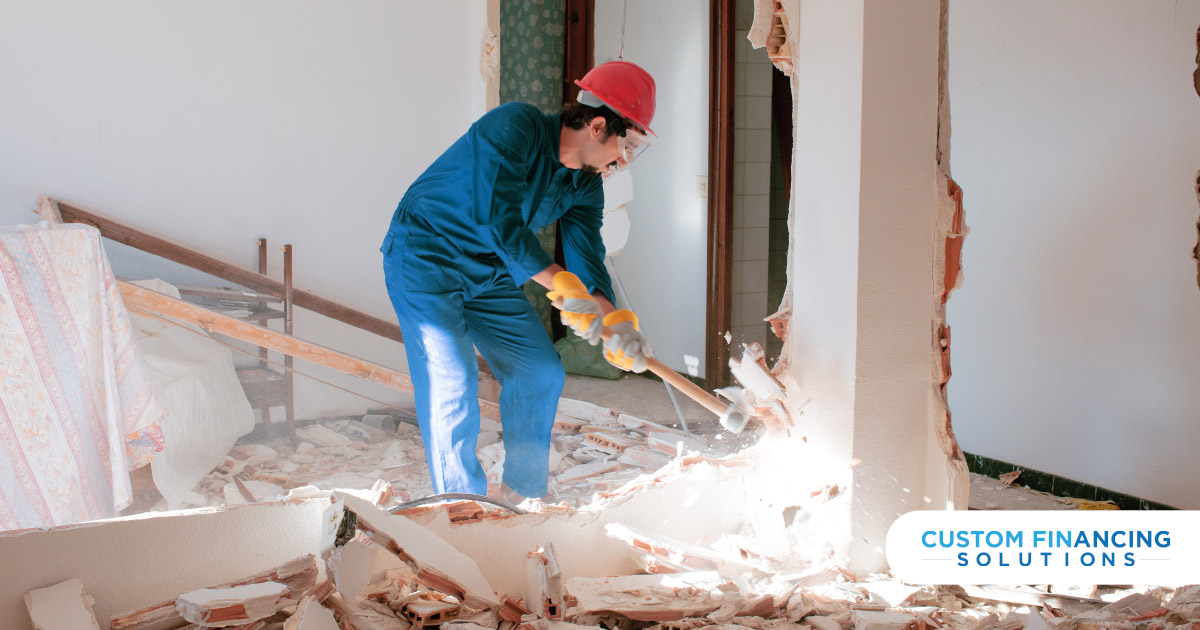You should be familiar with all the aspects of the remodeling business to become successful. This includes construction, design, and demolishing.
There is no demolition in some projects, others have small structural changes which involve tearing down a wall or two. However, a full-scale remodel of the entire house can involve tearing it down to the ground and building a new one in its place. Like other work, this demands precision.

Inspection & Quotation
The first step is to visit the site. Inspect for any harmful materials (like asbestos) in the house. Make a rough list of all materials that can be salvaged. Look at the property and note down all the load-bearing walls. All the data collected at this moment goes into making a good plan.
The quotation depends on how big the home is and which method of demolition they choose. Adjust your quote accordingly if you are planning on renting machinery specially for this project. A usual demolishing project costs around $4,000-$12,000.
Getting The Permit
Think of it as the opposite of a building permit. A demolishing permit is a legal document that gives you permission to demolish a house.
The requirements depend on the area. Most of them are available online and at the City Hall. Some of them will require you to submit a plan that includes what you will do to solve any issues related to noise, dust, debris, etc.
Disconnecting Services
Before the actual demolition begins, disconnect the gas, sewage, water, and electricity connections.
Not doing it properly poses risk to your workers. Loose electric connections cause shock and burst pipes fill the area with water. Improper disconnection can be the reason for widespread problems like the loss of electricity in the neighborhood.
Deconstructing The House
The ‘green’ approach to doing things has promoted the need for deconstructing the house before demolition. It involves manually removing the elements that were marked at the time of inspection. These can be doors, windows, cabinets, etc.
This process is time and labor-intensive. On the plus side, it helps to get materials and objects that can be recycled or reused. With the permission of the homeowners, you can tie up with a local charity to donate some of these materials.
Demolishing The House
Mark around the area of the house so that no one goes in or out. Mechanical demolition is one of the most cost-effective ways. Demolish the house using excavators and heavy machinery. If you don’t own one, you can rent one.
Inform the people nearby before you start the job.
Clean Up
Dust and debris are the most common by-products. Dealing with them is crucial to ensure an exceptional experience for your customers.
Here are some tips to deal with the clean-up that follows.
The entire process could take anywhere between a couple of days to a week’s time. There are many potential ways that your staff could injure themselves during demolition. You must look after their safety. Rethink worksite safety measures with these tips.
A full-scale demolition & construction project can weigh heavy on your client’s pocket, triggering the need to take a home improvement loan. And procuring that in itself is a task, leading to project delays or even cancellation. Provide your clients with the ease of financing by partnering with CustomFin. We offer your customers easy payment plans so that you can close more deals.
Get started now and grow your business.









